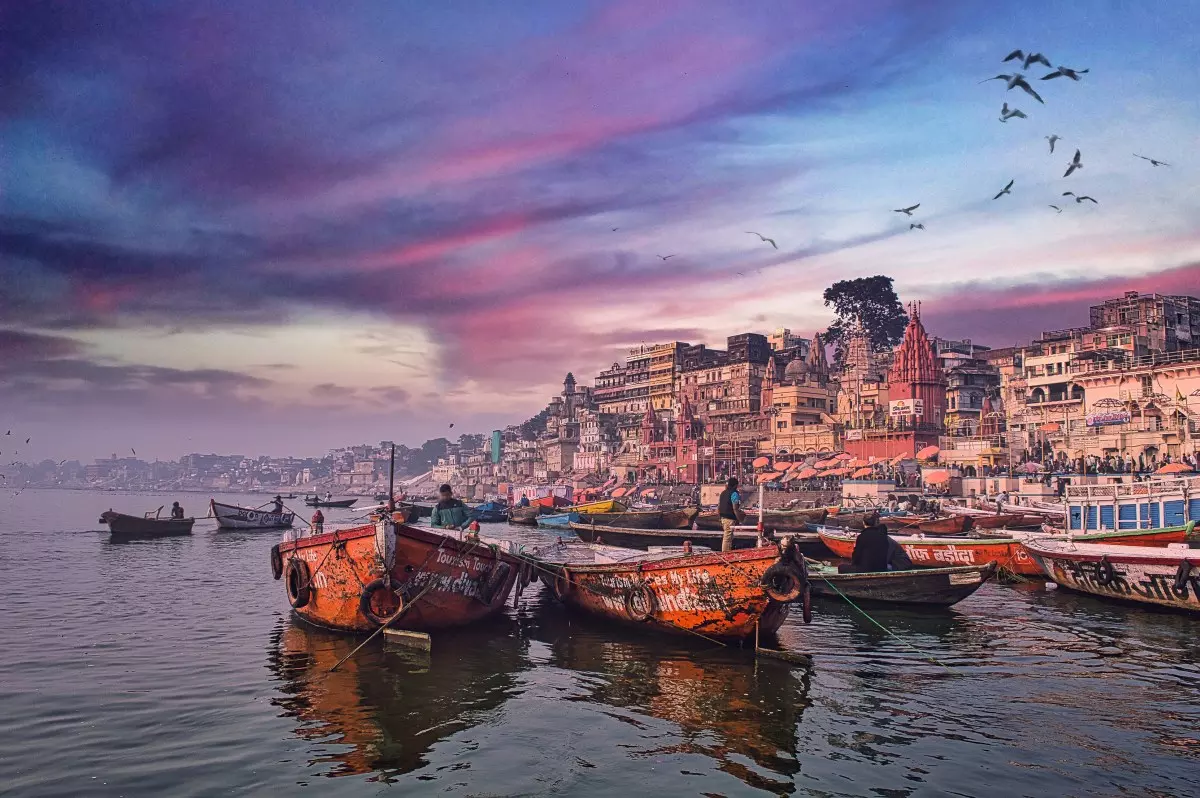
More people are visiting holy sites, and pilgrimage travel is no longer seen just a solemn duty — it's becoming popular, trendy, especially among young travellers
Varanasi vs Goa: Which way are Indians headed?
Spiritual destinations such as Varanasi, Ayodhya, and Tirupati are seeing a major boom, driving hospitality growth

Goa or Varanasi? Where are tourists headed? The answer is NOT obvious.
After the COVID-19 gloom, domestic tourist numbers in the country are rising, with the biggest surprise being the surge in spiritual tourism.
That was the biggest takeaway and one of the most-discussed points across sections and panels on Day 2 at the 55th Federation of Hotels and Restaurants Association of India (FHRAI) annual convention in Bengaluru on Friday (September 19).
Two-tier and three-tier destinations for wellness, yoga, and meditation are also witnessing a boom
Themed 'Futurescape 2047: Refining Hospitality for New India', the event brought together more than 1,000 delegates, including hoteliers, industry leaders, and policymakers, to discuss the future of India’s hospitality landscape. In fact, many industry leaders said the hospitality industry must revamp its strategy to meet the growing demand in two-tier and three-tier towns.
Also read: Friends of Bandipur: Karnataka wildlife camp packs tigers, birds and all that's beautiful
Varanasi surges ahead in numbers
So, coming back to the question – Goa or Varanasi? The answer is Varanasi, and it is miles ahead of the latter. As per government estimates, Goa had over 1 crore tourists, while Varanasi had nearly 11 crore visitors. The story does not end there.
The number of visitors is surging in pockets and pilgrimage towns such as Ayodhya, Tirupati, Prayagraj, Varanasi, Puri, and Ajmer.
This trend is not limited to traditional pilgrimage sites; it also includes destinations for wellness, yoga, and meditation. Rishikesh is an apt for example.
A presentation by Achin Khanna, managing partner, Hotelivate, listed out top 50 spiritual destinations across the country, reflecting the growing spiritual inclination of mostly Indian tourists. The Varanasi-Goa figures were also listed in the slides.
Tirumala tops Agoda’s searches
During a discussion at the event, Gaurav Malik, Country Director (India), Agoda, threw a question to the audience, asking which Indian town or city featured the most in their platform's recent searches. With the crowd coming up with names like Bengaluru, Agra, and Guwahati, his answer was probably the least expected: it was Tirupati, the temple town in Andhra Pradesh.
Other panellists and stakeholders said it is no surprise and the ‘’spiritual trend has been there for a while, and it might stay for long’’.
Also read: How to enjoy Australia’s wondrous Great Barrier Reef as a non-swimmer
Does it also include Gen Z? ‘’We don’t have proper demographic data and other details, but from our searches, Tirupati has emerged as the top destination as far as searches are concerned. Darjeeling came second,'' said Malik.
In early 2025, Agoda's accommodation search trends have also shown the same trend, with a growing number of both domestic and international travelers interested in culturally and spiritually significant destinations. Multiple speakers noted that Gen Z may not be particularly religious, but they are also seeking diverse experiences, and trends indicate this paradigm shift.
The surge is attributed to a combination of factors, including improved connectivity, enhanced infrastructure, and a growing desire among both domestic and international visitors for meaningful, transformative experiences.
Karnataka set to tap its long coastal belt
Karnataka Chief Minister Siddaramaiah on Thursday (September 18) inaugurated the three-day FHRAI event, announcing a series of policies and initiatives aimed at boosting the state’s tourism and hospitality sector.
Siddaramaiah said that the state would soon roll out a 'Coastal Tourism Policy' to leverage its 320-km-long coastline, supported by a dedicated ₹200 crore fund.
Additionally, a 'Homestay Policy' is in the works to promote community-driven hospitality and encourage tourism in rural and heritage-rich regions. Karnataka has also added 54 new hotels and resorts in recent years to expand its accommodation base.
Also read: In Uttarakhand’s Tehri Garhwal, women help boost rural tourism as nature guides
Siddaramaiah underlined Karnataka’s robust tourism growth, noting that domestic tourist arrivals reached 30.46 crore in 2024, a 56 per cent increase from the previous year. The sector contributed ₹25,000 crore to the state’s economy and created over 4 lakh direct and indirect jobs.
While 1,000 youth have already been trained as tourist guides, the chief minister announced plans to train 50,000 young people by 2026, positioning them as “brand ambassadors of tourism in Karnataka.”
Gadag, Mandya to get big boost
He also emphasised Bengaluru’s emergence as a premium hub for MICE (Meetings, Incentives, Conferences, and Exhibitions), accounting for nearly 15 per cent of the national market share.
Tourism projects are being initiated in Gadag, Hassan, and Mandya, while pilgrimage centres such as Anjanadri Hills and Saundatti Yellamma are under active development. The state also invited FHRAI to explore opportunities in heritage-rich sites like Lakkundi and Aihole.
Speaking at the event, Union Tourism Minister Gajendra Singh Shekhawat said India’s hospitality sector is poised for 20 per cent growth in the coming years, highlighting its role in the country’s broader economic expansion.
Also Read: Ramadevara Betta: Inside India's first and only vulture sanctuary

